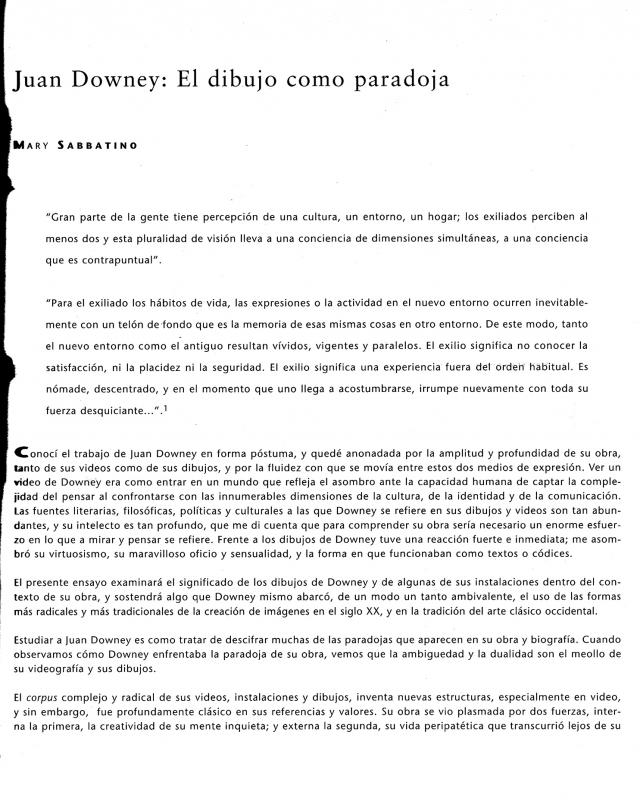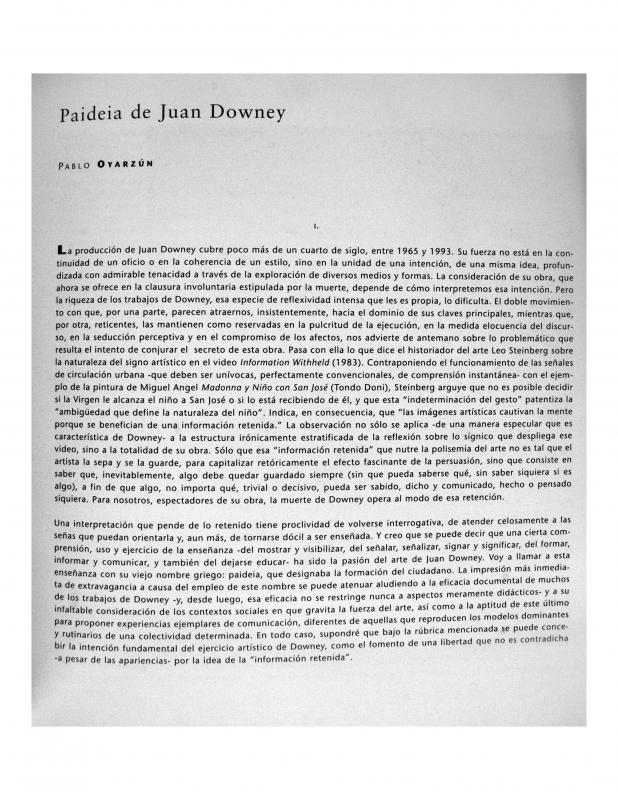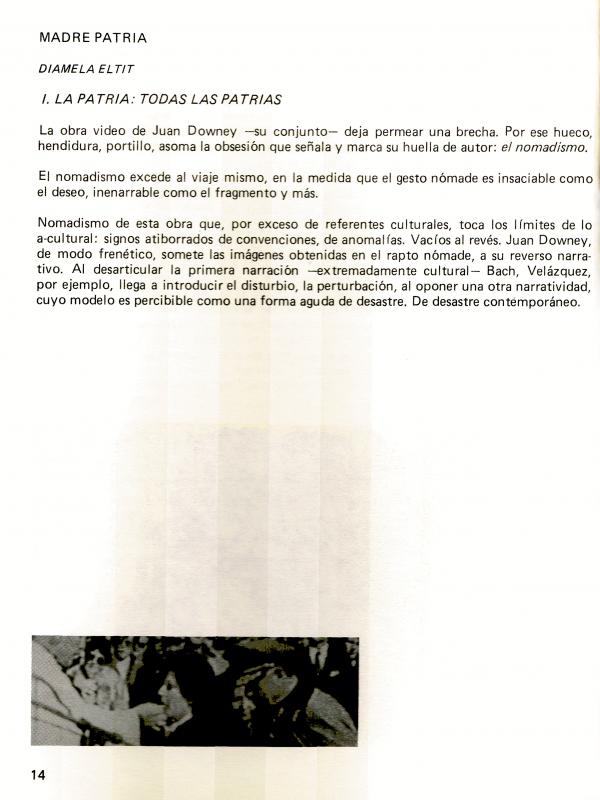“Viaje hacia la totalidad” is an essay about the artistic work of Juan Downey (1940–1993) written by the anthropologist Carlos Aldunate and published in the catalogue for the exhibition Juan Downey: Instalaciones, Dibujos y Videos. Museo Nacional de Bellas Artes in Santiago (1995). This was the first exhibition of Downey’s work in Chile since his death in New York, where he had been living since 1969. [See the ICAA Digital Archive for more texts from this catalogue: “Reelaborando la modernidad de Juan Downey en The thinking eye” (doc. no. 739203) by John Hanhardt, “Juan Downey: el dibujo como paradoja” (doc. no. 739194) by Mary Sabbatino, and “Paideia de Juan Downey” (doc. no. 739185) by Pablo Oyarzún.]
Juan Downey was a pioneer of video art, though he also worked in other fields, including drawing, printmaking, and painting. As a self-taught artist, Downey’s career was characterized by medial explorations that allowed him to put together an unprecedented body of work. After graduating with a degree in architecture he left Chile and went to Germany, studied painting in Spain, and became interested in printmaking in France. He eventually settled in the United States, where he started dabbling in technology. He produced Invisible Communications(1967) at that time, a sculpture that was activated by interacting with viewers. The feminist art critic Ann-Sargent Wooster reviewed this period in detail in “Juan Downey” (doc. no. 739219). After producing works of this kind, he sought to reconnect with his roots through other cultures, as in Trans Américas (1973–76), his lengthy series based on a number of trips in Latin America, where he recorded Indigenous tribes interacting with the landscapes and social environments. At first, he set out to generate a connection between one place and another by showing a tribe or culture the footage he had previously shot of other such groups somewhere else. “El olor del aguarrás,” which Downey wrote fifteen years after he began working on his most ambitious project, hints at an openness and a failure of some kind in the subtitle, “No se descifra nada haciendo videos” [Nothing can be deciphered by making videos], indicating his profound self-criticism concerning his initial beliefs about the sociopolitical potential of making works, though he does note the importance of them taking charge of their own context.
“El viaje” [The Journey] as self-discovery and technical experimentation were constants in his work, and his immigrant status influenced his work. Chile was one of his obsessions, and his videos can be seen as a constant tribute, as suggested by Eltit in “Madre Patria” (doc. no. 735694).



